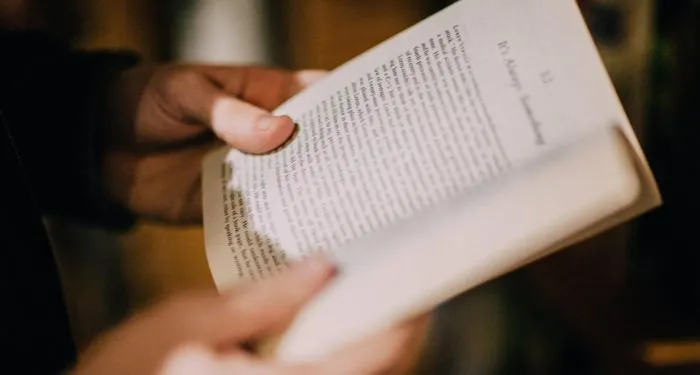Getting sick in Gaza means entering a system that is itself on life support. To see a doctor in the first place, if you can’t afford the outrageous cost of transportation by car you often have to walk long distances on nearly impassable roads, or rely on someone else to carry you. If a life-threatening emergency occurs at night, you may have to wait for the next day—not just the first sunlight but the relatively safer later hours—because moving too soon could mean not arriving at all. But the diagnosis is only the beginning. What was once a step toward healing has now often become a countdown. Even if your illness is treatable, your environment may not allow you to recover. The care you receive depends on remnants of local expertise, adapted to whatever treatments and medical equipment are still available. Practically every hospital here has been bombed, pharmacies are empty, and specialized treatment is, for most, all but unavailable.
First as a medical student and now as a young physician based in Gaza, I have spent several months collaborating with my colleagues to study the war’s effects on some of the Strip’s most vulnerable patients. A particular focus of my work is on individuals with end-stage kidney disease who require hemodialysis. Before the current war, data showed that between 1,000 and 1,500 people in Gaza depended on continuous access to dialysis services. They received treatment via approximately 182 dialysis machines across seven centers: Al-Shifa Medical Complex, Rantisi Children’s Hospital, and Al-Quds Hospital, all in Gaza City; Noura Al-Kaabi Dialysis Center in North Gaza; Al-Aqsa Martyrs Hospital in Deir Al-Balah; Nasser Medical Complex in Khan Yunis; and Abu Youssef Al-Najjar Hospital in Rafah.
Even before the war, these patients’ daily experience was far from stable. Poverty and unemployment were widespread, and many reported poor overall quality of life. Most dialysis machines were running in excess of their recommended hours. There was a constant shortage of supplies, solutions, and medications. Less than a month before the start of the war, the Ministry of Health’s central warehouses ran out of medical consumables—limited-use, essential, and irreplaceable items—for dialysis services, including blood filters, cannulas, and blood tubes. The unhygienic conditions that proliferated in Gaza, driven in part by extreme poverty, contributed to high rates of fistula failures—the surgical connection between an artery and a vein at which doctors insert the cannula, the thin tube used in dialysis.
Now, however, the lives of dialysis patients have become a constant balancing act between hope and exhaustion. Most of these patients require medications—erythropoiesis-stimulating agents, phosphate binders, and antihypertensives—that are subject to dire shortages now that Gaza’s health system has been stripped bare. Attempting a kidney-friendly diet is a challenge under the best conditions, but it has become practically impossible now that famine is tightening its grip: prices for basic commodities have soared to nearly a hundred times their normal value.
Maintaining a healthy lifestyle is crucial to managing chronic kidney disease and its common comorbidities, such as hypertension and diabetes. But now even the healthiest of us are worn down and depleted. Cooking often means inhaling toxic fumes from burning plastic or scrap wood, securing even unclean water takes hours of waiting in long lines, sleep is fragmented, drones buzz overhead night and day, and the only form of exercise left is running for one’s life. Many patients have lost loved ones and caretakers, plunging them deeper into isolation and despair. Above all people with end-stage kidney disease need regular dialysis sessions, for which there are only four overcrowded and hard-to-reach centers remaining. The result is that these patients—like so many others in Gaza—are silently dying.
*
Growing up in Gaza, I saw firsthand how systemic challenges could produce individual suffering—from the financial constraints and material deprivations engineered by Israel’s blockade to the devastating effects of the many wars through which I lived. In 2018, when I enrolled at Al-Azhar University in Gaza City, I resolved to study medicine. I saw caring for the sick as a chance to alleviate that suffering. But as I progressed in my studies I also realized that conducting social and medical research could be a powerful way to build collective power. It was a matter not just of documenting injustice but of making it possible for people—especially those who suffer the most—to identify their own needs, share their stories, and seek lasting change.
Never has that project been more urgent—or more difficult—than over the past eighteen months. Every family has its own list of tragedies. My parents, my four siblings, and I have been displaced more than fifteen times; with each forced relocation it is as if we lose a part of ourselves. One day the Israeli forces targeted the building in which we were sheltering; my sister injured her hand and foot as we escaped. After fleeing we took shelter in an old family house built in 1956, with a small garden. We’ve been displaced from there—and returned there—multiple times over the course of the war, during which we lost our childhood home in Al-Zahra City. Now the house is at constant risk of collapse, especially during airstrikes.
Along the way I’ve witnessed things no one should ever have to see. Once, after a neighboring home was bombed, a young girl was thrown through the air and landed in our place, sustaining multiple injuries: the couch she had been sleeping on flew with her and helped absorb some of the shock, which likely saved her life. Another day, during one of our displacements into a remote area, I was out with my mother trying to gather food when a tank shell struck nearby and tore a man in half. His upper body lay in front of me; the rest of him had either blown away or melted into the rubble. A few weeks later my uncle, Hosam Hamada—Gaza’s most senior pathologist—bled to death over two nights while seeking safe passage for his family during a prolonged siege.
For six years another uncle, Hisham AbuAqlain, battled lung cancer. His care was repeatedly obstructed by the degrading barriers imposed by Israel’s apartheid system and permit regime, which forced him to travel back and forth between Gaza and East Jerusalem to receive treatment with little time in between for adequate monitoring or support. Shortly after his diagnosis in 2019 he was told that, due to a lack of proper follow-up kidney care, he had mistakenly gotten a dose of chemotherapy despite having dangerously high creatinine levels and severe edema, resulting in further kidney damage and the eventual need for regular dialysis. Elevated levels of creatinine—a marker of poor kidney function—had already indicated serious renal impairment, but the fragmented nature of his care made it nearly impossible to respond appropriately. Accessing hospitals in East Jerusalem required navigating a lengthy, unpredictable approval process. Sometimes his health deteriorated sharply—especially during times of war or escalation, or when permission was denied for a relative to accompany him.
Last year, after living through six months of war in Gaza, he was evacuated to Turkey for treatment. He spent several months there without access to his cancer therapy because he lacked financial means, but that deprivation hardly compared to what he endured during that first half-year in the Strip. Having been forced to relocate to southern Gaza, he often had to walk miles to reach the dialysis center at Al-Aqsa Martyrs Hospital, where he received two hour-long sessions a week. Many times he walked dangerously close to nearby air strikes on his way to or from the hospital. Meanwhile he went without his cancer medication altogether.
On June 11 my family learned that Hisham had departed this life. My mother had been a close witness to his long, wearying journey. “I wish,” she told me, “I had been there to support him in his final days.” To the people of Gaza even the chance to say goodbye has become a luxury.
*
Through all this, my colleagues and I kept up our work. For a recent study I worked closely with hemodialysis patients in order to understand how they were enduring such severe conditions. At first I assumed that resilience, routine, or family support had helped most of Gaza’s dialysis recipients survive the unthinkable. But in October 2024 I was told that the total number of patients currently receiving dialysis was around 850—a figure far smaller than the prewar count. Many patients, it dawned on me then, had already died.
As we carried out the study, we saw that more and more names were being added to our list of patients—people whose need for end-stage kidney disease treatment had developed after they sustained war-related injuries, or after previously manageable conditions worsened—even as the man-made disaster cost other dialysis recipients their lives. In April Gaza’s health ministry reported that more than four hundred such patients, roughly two out of every five in the Strip, had died over the previous eighteen months from lack of care.
When the study concluded, the findings were unsurprising, but no less shocking for it. The remaining sites with dialysis services are inadequate to meet the population’s needs. Some patients have gone more than a hundred days without access to dialysis, resulting in a buildup of the toxins that healthy kidneys would normally eliminate. One or two sessions a week are hardly enough either to reduce dangerously high urea levels or control blood pressure effectively. The surviving patients have, on average, lost ten kilograms each.
Spending even a few minutes in the crumbling, ruined emergency wing of Al-Shifa Hospital, where I am doing my internship, is enough to make you realize that this is a reality beyond repair. You cannot fix death. I find myself staring into the eyes of people entering the emergency room. I see the fear for their loved ones etched onto their faces. I see how desperately they hope, but I also know how fast the gap is growing between their needs and the system in which they place their trust. I spend my shifts trying to contain my misery, imagining a rational solution to fix it all. But every time I arrive at the same conclusion: we need a miracle.
Yet it was not a miracle that managed to shock me. On Sunday, June 1, the Israeli military destroyed the Noura Al-Kaabi Dialysis Center, the only one in North Gaza, which served more than forty patients a week. For these patients my research has become largely irrelevant: there will be no health care left for them to access, no data to analyze, no stories to be written about their resilience or their fight to survive. Many of them will die slowly, each one becoming another number in the growing butcher’s bill of the Gaza genocide.



















 English (US) ·
English (US) ·